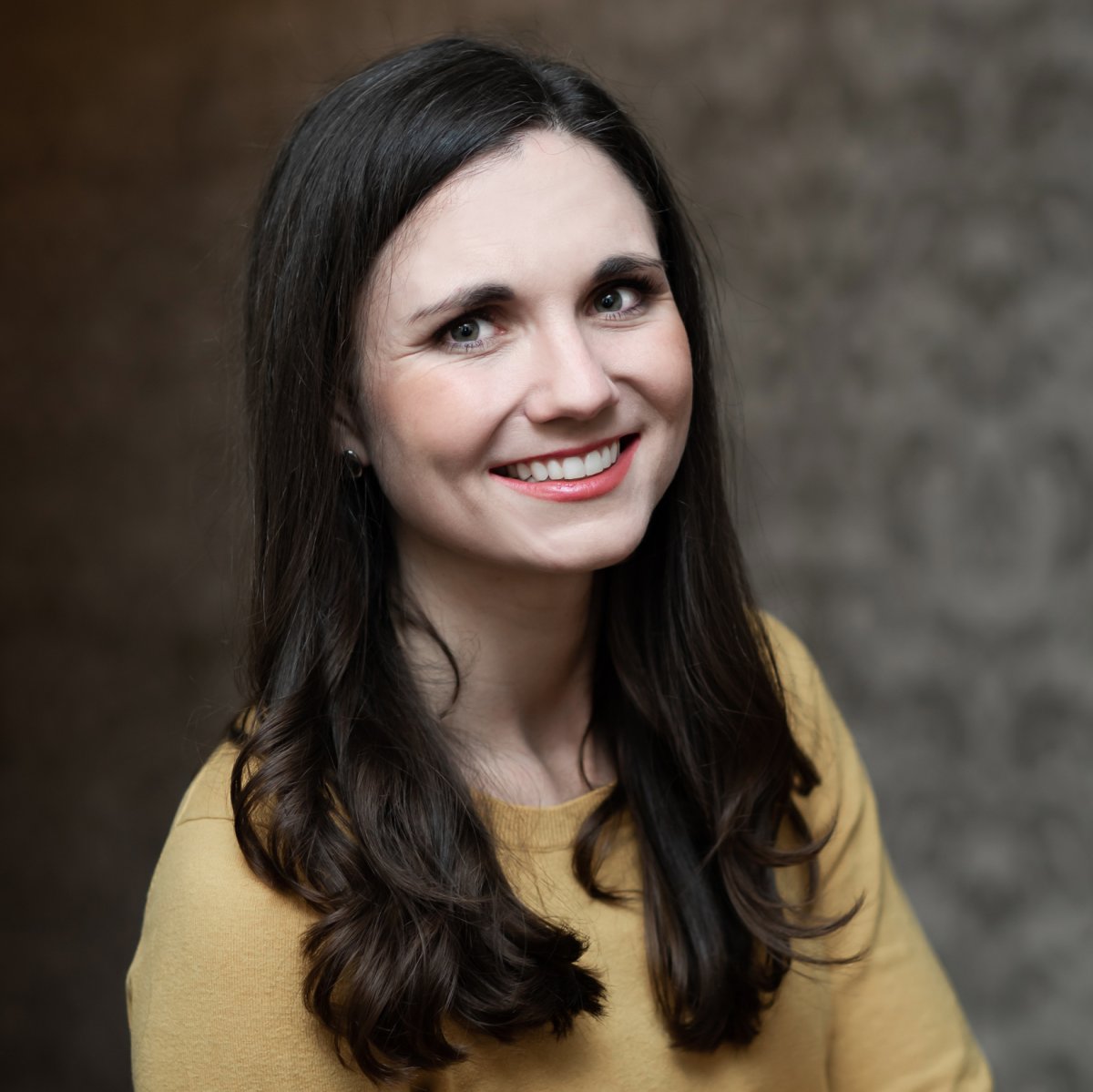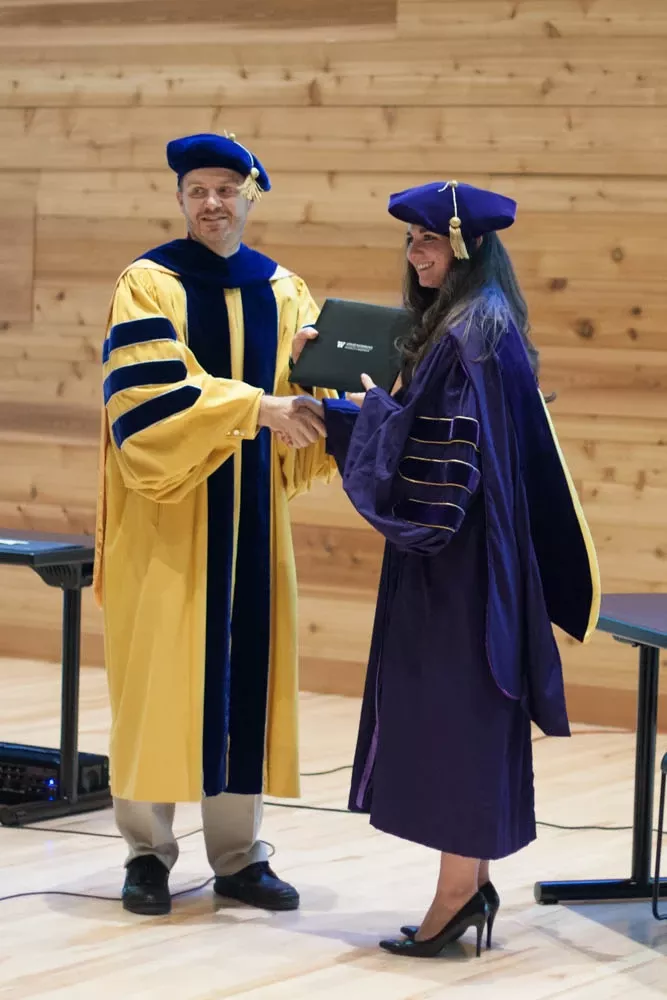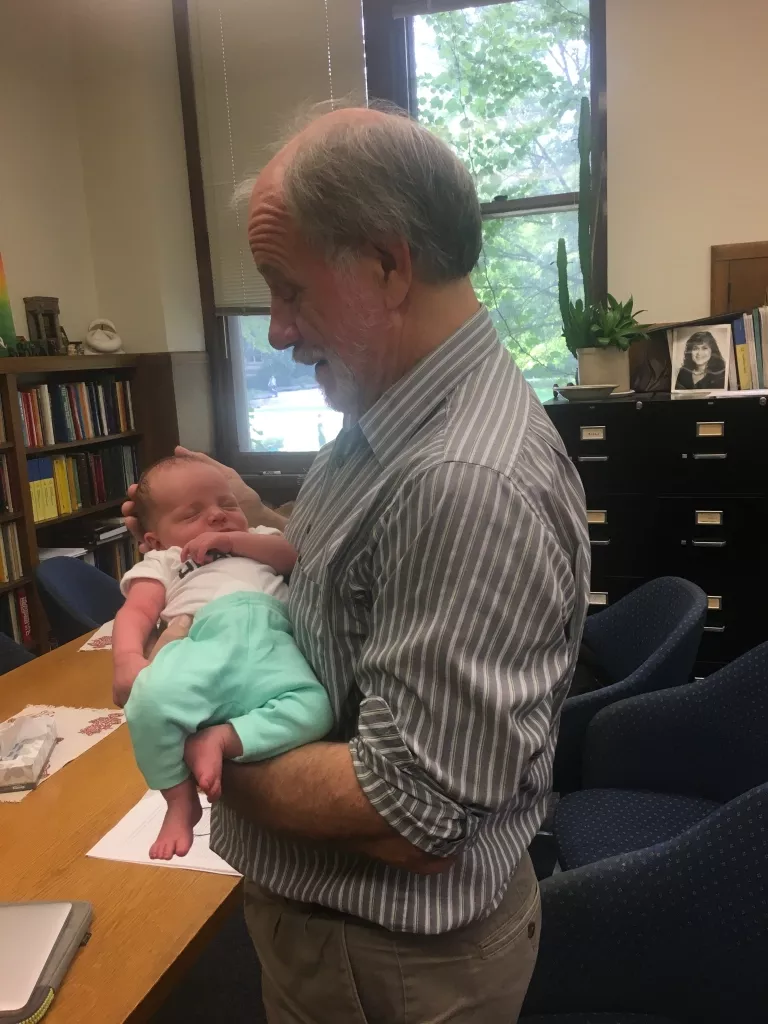How I ended up in industry

By Natalie Sheils, PhD, Senior Principal Research Scientist at OptumLabs
As an undergraduate, I attended a Jesuit University and bought fully into the process and importance of discernment in finding a life that was meaningful and would impact my community and the world. During the years following my undergraduate studies, I have often adjusted my ideas about what is meaningful and where I could have the greatest impact, and there have been times when I’ve deviated widely from where I imagined I would be.
During my PhD I focused on analytical solutions to partial differential equations (PDEs). My time in graduate school cemented my desire to find a career where I could push the limits of my creative and technical abilities. I had the opportunity to observe the careers of many academic mathematicians, and I also spent a summer interning at The Boeing Company. That internship experience showed me that plenty of exciting problems exist outside of academia, but the desire to mentor PhD students and the freedom of academic research kept me focused on the path toward a faculty position.
In 2015, I accepted a postdoc at the University of Minnesota (UMN). I received excellent support from my mentor, Peter Olver, and from my spouse who left his career and extended family to help me follow my dream. I enjoyed the chance to teach courses and build meaningful relationships with students. My research program grew, and I continued to explore new phenomena in PDEs.

After one year of my postdoc in the math department, I moved my office across the street to take a one-year position at the Institute for Mathematics and its Applications (IMA) for their thematic year on optics. I also gave birth to my first child, and I’ll never forget bringing her into Peter Olver’s office (then head of the Mathematics Department at UMN) at just a few weeks old. When she needed a mid-meeting diaper change, Peter assured me I could change her right there on the conference table!
The next year, I returned to my postdoc at UMN and focused on applying for tenure track positions. I had several interviews but still no offers. Then, the fourth year of my postdoc began with the delivery of my second child just one day before the start of classes. While caring for a newborn and letting my body heal, I spent my leave applying for jobs. I had the difficult task of interviewing for faculty positions on very little sleep and while having to stop for frequent pumping breaks.


By February 2019, it was becoming clear to me that no faculty positions were coming my way. I was unwilling to put myself and my family through a third year on the emotional rollercoaster of the university faculty job hunt. I began to utilize my network and look for jobs outside of academia.
I reached out to ask for advice from my graduate school and postdoc friends who had gone into industry. I also talked to faculty members who had industry connections. I was especially lucky to know Fadil Santosa (one of the authors of the BIG Jobs Guide) and others at the IMA who introduced me to their contacts and former students. I took people out for coffee and drove to remote areas of the city to meet people at their places of work. I applied to any job that looked even moderately interesting. I talked to recruiters and got better at explaining how my math background would serve me in a role at their company – even if they didn’t know what a PDE was.
Eventually, a friend connected me with a mathematician at UnitedHealth Group Research and Development (now OptumLabs). He shared details about his role in shaping how mathematics, data, and computational tools can be used to positively impact the future of healthcare. A few weeks later, I applied to work with him and in May 2019 I began my tenure as a research scientist at UnitedHealth Group.
Finding the right job was difficult and time consuming, but the skills I gained while interviewing have continued to serve me. Even though I’m part of a research and development organization, I continually encounter people who aren’t quite sure what to do with my math skills. To this day, I am working to hone my elevator pitch on why mathematics and mechanistic models have a role in a world dominated by buzz words like “analytics,” “big data,” and “AI.” My elevator pitch changes slightly each time, but there are three related themes that usually emerge. First, to build mathematical tools, one must thoroughly understand relationships between entities and enumerate any assumptions or unknowns. Second, thinking about problems in a mathematical framework forces people to structure their thinking. Third, when you combine these invaluable skills that help to isolate the heart of a problem and move people toward consensus on foundational assumptions, enterprise leaders can quickly arrive at innovative solutions without wasting precious time. This is healthcare, after all, so we have to provide patients with the best care as quickly as possible – before their conditions become irreversible or difficult to manage.
Recently, after speaking at a seminar, one of the attendees told me that while the math I’m doing today might not be as interesting as what I did during my graduate school and postdoc years, the impact is much greater. I’m not completely sure this is true, but I do feel that my impact is more immediately evident. When my career path was focused on academia, I believed strongly that even if the application wasn’t obvious right away, the problems I was solving were contributing to a greater scientific understanding of the world and would play a part in positively impacting society at some point in the future. Today, the applications of my work are more apparent. In fact, they have to be – both to me and to leadership at my company. If I am unable to clearly articulate the value of the projects I want to do, they are unlikely to be staffed, funded, and advanced. This is not so different from grant applications in academia.
My discernment process continues as new opportunities arise. In industry, I can continue to work as an individual contributor and as a technical mentor to a team, helping to build models and understand healthcare from a computational perspective. As my healthcare expertise grows, I also have the option to advance as a business leader and use my critical thinking skills to help make strategy and investment decisions.
My life today is not at all what I would have imagined for myself more than ten years ago when I entered graduate school. And I’m not at all certain where I’ll be in ten years from now, but I look forward to whatever doors may open in the future. My mathematical training prepared me to take on a broad variety of challenging problems. My experience communicating between application areas and my deep technical expertise have allowed me to thrive and grow in my current position.

My dream of mentoring graduate students need not end. While I’m unlikely to advise on a thesis committee any time soon, many bright and driven graduates continue to cross my path. I hope to mentor, support, and encourage them as they grow into leaders in the fields they find most meaningful. Seeing so few women, especially mothers, in my field during my training has left a lasting impression on me. Women remain underrepresented in the scientific work force, especially in leadership roles, and I hope that my presence, my voice, and my success can help open doors for others who choose to follow a similar path.
ABOUT THE AUTHOR
Natalie Sheils is a senior principal research scientist at OptumLabs, part of UnitedHealth Group. Prior to joining OptumLabs and beginning a career in healthcare research Natalie earned her PhD in applied mathematics from the University of Washington and did a postdoctoral fellowship at the University of Minnesota School of Mathematics. Her mathematical research focus was analytical solutions to partial differential equations with special attention to the effects of boundary conditions.
Natalie has always maintained interest in policy, especially as it relates to science and served as an early career fellow for the Society for Industrial and Applied Mathematics (SIAM) Committee on Science Policy in 2018 and 2019. Currently, she is serving a three-year term as a voting member on the American Mathematics Society (AMS) Committee on Science Policy.
Natalie is an author of more than 20 peer reviewed journal articles and a frequent speaker at conferences, seminars, and colloquia.